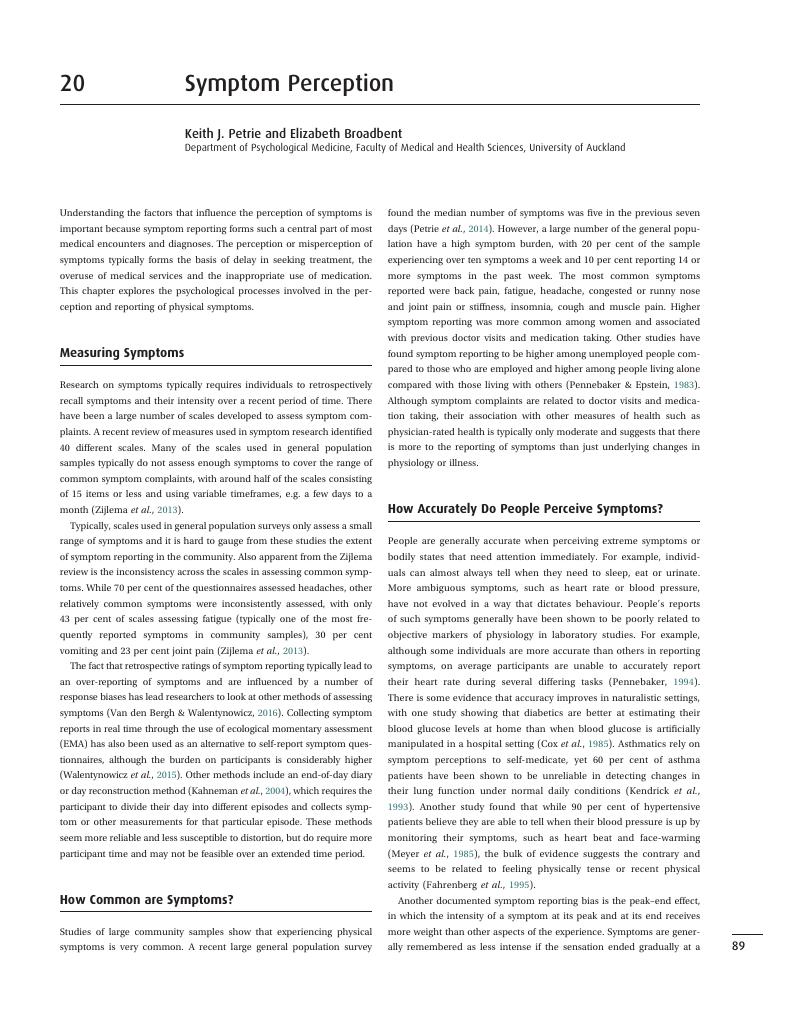20 - Symptom Perception
from Theme 4: - Responding to Symptoms
Published online by Cambridge University Press: 05 June 2019
Summary

- Type
- Chapter
- Information
- Cambridge Handbook of Psychology, Health and Medicine , pp. 89 - 92Publisher: Cambridge University PressPrint publication year: 2019



